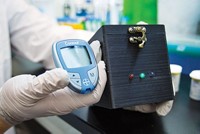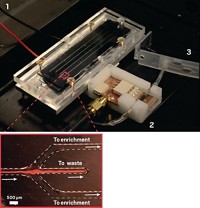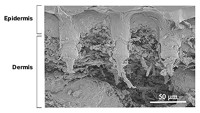Advertisement
Grab your lab coat. Let's get started
Welcome!
Welcome!
Create an account below to get 6 C&EN articles per month, receive newsletters and more - all free.
It seems this is your first time logging in online. Please enter the following information to continue.
As an ACS member you automatically get access to this site. All we need is few more details to create your reading experience.
Not you? Sign in with a different account.
Not you? Sign in with a different account.
ERROR 1
ERROR 1
ERROR 2
ERROR 2
ERROR 2
ERROR 2
ERROR 2
Password and Confirm password must match.
If you have an ACS member number, please enter it here so we can link this account to your membership. (optional)
ERROR 2
ACS values your privacy. By submitting your information, you are gaining access to C&EN and subscribing to our weekly newsletter. We use the information you provide to make your reading experience better, and we will never sell your data to third party members.
Analytical Chemistry
Bacterial ID In A Half-Hour
Medical Diagnostics: Chip identifies pathogens in minutes, not days
by Louisa Dalton
December 13, 2011

A doctor can wait for days to get laboratory results identifying the microbe behind a patient’s illness. But a new biosensing chip can do the same thing on-site in minutes (Anal. Chem., DOI: 10.1021/ac202599b). The chip both breaks apart cells and detects bacterial DNA in a novel all-in-one test.
A rapid method to identify bacteria is a “pressing unmet need,” says Shana O. Kelley at the University of Toronto. After taking a sample from a patient, doctors depend on either growing the bacteria on a culture plate, which can take days, or amplifying the bacterial DNA using polymerase chain reaction, which requires pure samples and expensive equipment.
Kelley decided to tackle the problem with a biosensor that can detect a microbe’s nucleic acids without sample preparation or complex equipment. Earlier this year, Kelley’s group developed a highly sensitive bacterial DNA-sensing chip that could spot DNA even in unpurified samples. But the researchers still had to break open the bacterial cells—a process called lysis—to release the DNA before applying the samples to the chip. To make a more useful clinical test, they now have added a lysis chamber to the chip.
Their two-step testing cartridge is not much bigger than a domino. It first applies an electrical field to the sample to break cells apart. Then biomolecule probes bind to DNA from specific disease-causing bacteria, triggering an electrochemical reaction that reports the binding.
The researchers put their system to the test by adding probes for two common microbes responsible for urinary tract infections: Staphylococcus saprophyticus and Escherichiacoli. The cartridge detected both bacteria in urine at levels as low as one cell per microliter, which makes it sensitive enough to be made into a tool doctors could use. Kelley says the cartridge can be tweaked to detect up to 100 types of pathogens at once and would be easy to make in bulk.





Join the conversation
Contact the reporter
Submit a Letter to the Editor for publication
Engage with us on Twitter